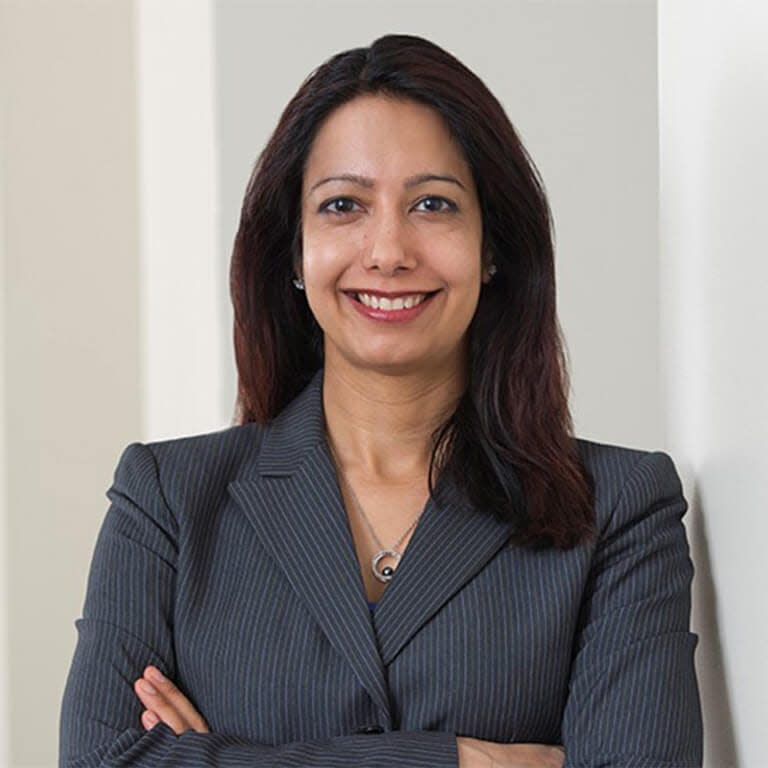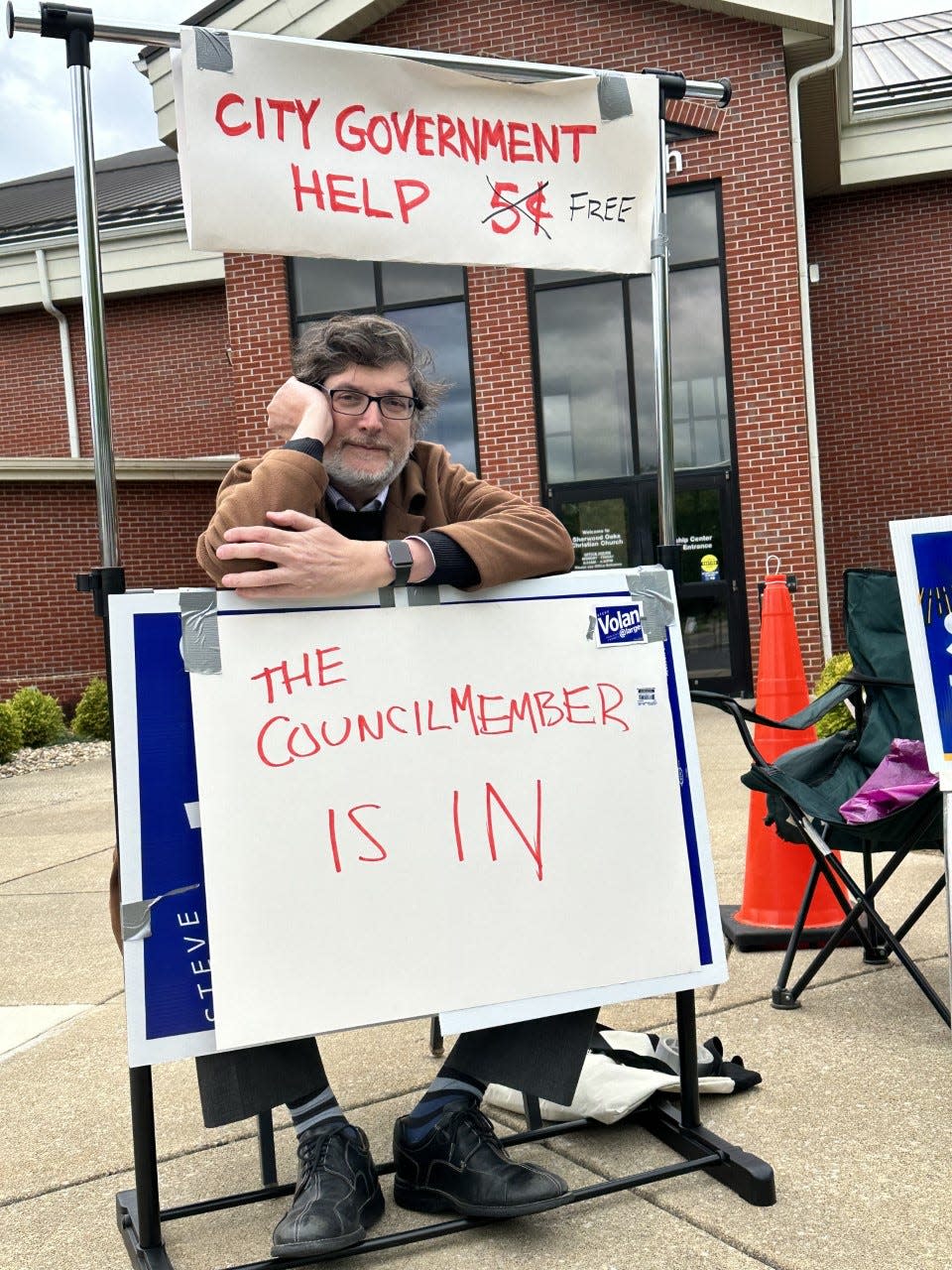Historic election: High turnout; younger, more diverse Bloomington City Council members

A historic election this week brought out near-record numbers of voters who shook up the city's Democratic Party-dominated leadership and made their representatives younger and more diverse.
Barring any Republican upsets in the fall, Bloomington next year will have, for the first time ever, a mayor from Generation X in Kerry Thomson, 49. The city council will, for the first time, have two people of color, including Isak Asare and, for the first time ever, a woman of color in Shruti Rana. So far, the council has had only two people of color in its entire history, according to David Henry, chair of the Monroe County Democratic Party.
The greater diversity of candidates also brought new voters to the polls, Henry said, pushing the number of local Democrats who cast ballots to potentially its highest total in a city election in 50 years.
Voting for change: Bloomington City Council incumbents Sgambelluri, Smith ousted in primary
The city council also is seeing what Henry and other political observers said is a “generational shift” as voters in many races chose political newcomers over established political insiders. For the first time in two decades, the council will be without Steve Volan, whose vote count was not enough in the at-large race, and Susan Sandberg, who unsuccessfully ran for mayor.
The significant changes on the council, where at least five of nine members will be new next year, also have broken the current power dynamic, which frequently saw decisions on important issues, such as homelessness and housing, decided by a 5-4 split.
Big turnout in Bloomington
More than 8,300 local voters cast ballots in this primary election, all but 45 were Democrats. More than 8,000 people cast ballots in the mayor’s race. That’s up from fewer than 5,400 in the primary in 2019.
Henry said the number of Democrats who voted in this year’s municipal primary was potentially higher than “anything we’ve seen in 50 years.”
He said a three-way mayor’s race, the diversity of choices among the candidates and lots of knocking on doors helped drive up the numbers.
Gen X: Kerry Thomson wins Democratic primary and will likely be Bloomington's next mayor
Asare, one of the nominees for the three at-large seats, Hopi Stosberg, who prevailed in District 3 primary and Rana, who won the District 5 nomination, put in a lot of work, he said.
“That elbow grease and doing the fundamentals of campaigning … get the job done,” Henry said.
Mark Fraley, a former chair of the local Democrats who now serves in a nonpartisan role at Indiana University, said the increased enthusiasm and engagement locally was driven by three serious contenders for mayor who each built strong grassroots organizations and put together substantial teams that had the capacity to do outreach into new geographic and demographic areas.
While the number of local voters this year was much higher than in many previous city primaries, Fraley said that in a city of about 80,000 he would like to see even more engagement.
“There’s wide room to grow,” he said.
Diversity was on the ballot
Henry said Asare is likely to become the third man of color to serve on the council, after Paul Swain Jr., and Jim Sims, who currently serves on the council but chose not to seek re-election.

Rana, meanwhile, made history by becoming the first woman of color to win a nomination for council, Henry said.
The elections of Asare and Rana continue a recent trend, he said, as last year saw the election of people of color for the sheriff’s office and county council, with Ruben Marté and Jennifer Crossley.
Bloomington council at large: Volan out, Flaherty, Asare, Ruff in
The community continues to seek out candidates of color and to expand its diversity in other ways so elected representatives more closely reflect the diversity of the community, Henry said. Those efforts are a result of the hard work of community members and entities such as the Monroe County Black Democratic Caucus and current leaders in the black community, including city and county clerks Nicole Bolden and Nicole Brown, as well as Judge Valeri Haughton.
Trent Deckard, another former chair of the local Democrats and a current county council member, said the community is continuing to expand the diversity of local candidates to give the electorate more choices.
Asare and Rana ran strong campaigns, he said, but they also come with impressive academic credentials and international experience.
After graduating from Indiana University, Asare completed graduate studies at the University of Oxford and University College London. He now serves as the co-director of the Cybersecurity and Global Policy Program at IU’s Hamilton Lugar School of Global and International Studies.
Rana, meanwhile, is a lawyer and professor who has taught in Maryland, California and Indiana, has worked at the United Nations in the Division for the Advancement of Women and has a long list of public service credentials including on the Bloomington Board of Public Safety, the board of Exodus Refugee Immigration and the Indian-American Leadership Initiative.
“I think voters see that and they are also embracing that candidates are going to be, look and love different,” Deckard said. “And I think that’s a strength.”
Generational shift
Voters on Tuesday also choose to re-elect and newly elect mostly younger candidates. Five of the current nine council members are near 60 years old or older. Voters on Tuesday chose five candidates younger than 40, including one, David Wolfe Bender, who is still a student at Indiana University.
Henry said Tuesday’s election represented a generational shift in that members of Generation X and Millennials are making some serious inroads into leadership positions. These kinds of changes happen from time to time, as people see their children leave home and then turn their focus more to civic engagement. Henry said a similar shift happened in the 1970s when many local candidates in their 30s prevailed, turning Bloomington into a city dominated by the Democratic Party.
“We are in one of those waves,” he said.
Bucking the trend Tuesday was Andy Ruff, who looks to return to the council after a four-year absence. Ruff already has served five terms on the council. He and Dave Rollo, who ran unopposed in District 4, look to be the only two council members remaining who were first elected more than 15 years ago.
Ideological shift?
Tuesday’s election also will put an end to two council factions that frequently clashed on major issues.
A five-member majority faction — Sandberg, Rollo, Sims, Ron Smith and Sue Sgambelluri — outvoted a four-member minority — Matt Flaherty, Kate Rosenbarger, Volan and Isabel Piedmont-Smith, on major issues, including homelessness, housing and annexation.
The split became clear in March 2021, in a record-breaking nine-hour session in which the council rejected a proposal that aimed to decriminalize sleeping on public property and to create a public space for homeless people.
Piedmont-Smith called that meeting a “watershed moment.”
Early last year, the five-member majority voted for Sandberg for council president. The four-member minority voted for Flaherty. Both factions then voted exactly the same for their preferred council vice president and their preferred candidate for plan commission liaison.
The 5-4 dynamic won’t exist after December, as four of the five-member majority — Sandberg, Sgambelluri, Sims, Smith — will no longer serve on the council. Of the four-member minority, three will remain. Only Volan did not secure another term.
Henry cautioned against using the term “ideology” to describe local council factions. That framing may be popular in local media, he said, but it does not reflect realities on the ground.
The candidates who were chosen Tuesday may have different opinions, Henry said, but they, along with Thomson, have indicated an intention to interact with respect and try to make decisions based on consensus and cooperation.
All the candidates value core principles of the Democratic Party, Henry said, and their differences on priorities and policy is really just “granular.”
Fraley agreed and said the 5-4 split and various labels that have been placed on the factions have not been beneficial to the council.
He said he hopes for ideological diversity on the council and that, despite the differences, the local leaders can engage with one another.
Fraley said candidates with whom he spoke did not talk about one ideological camp or another but about tackling local challenges, from a lack of housing to a lack of access to mental health resources to making the city more sustainable.
Deckard agreed.
“There’s tons of work to do, and there’s really not a lot of time to argue,” he said.
'End of an era'
Henry also noted that Volan, for the first time in 20 years, won't be on the council starting in January, calling it the "end of an era."
Volan said Tuesday that he pushed, about a decade ago, for the council to designate a committee to redraw council districts. The districts were redrawn last year, and the boundaries booted Volan out of the district in which had had been undefeated for 20 years.
Rather than challenging long-time fellow councilman and sometimes rival Dave Rollo in District 4, Volan instead ran for an at-large seat, but did not finish in the top three.
"You might say I left 'involantarily,'" he said to laughter (and groans) Tuesday at the Cascades Inn, where the local Democrats were awaiting election results.
Volan "took a big risk and it didn't work out," Henry said.
Volan is known, among other things, for pulling some creative stunts during his time on the council, such as when he dressed as a giant yellow chicken — he is well over 6 feet tall — when the council considered a ban on raising chickens in city limits. Volan on Tuesday visited polling sites Tuesday with a makeshift booth to dispense government help in an homage to Lucy, from the Peanuts comic strip.

Henry said Volan was a "vanguard progressive" in Bloomington who inspired other young progressives, such as Flaherty and Rosenbarger, to run for office.
"I think we're going to miss that voice," Henry said.
Volan said he plans to find other ways to remain in public service.
"You haven't heard the last of me — or my bad jokes," he said.
Boris Ladwig can be reached at bladwig@heraldt.com.
This article originally appeared on The Herald-Times: How Tuesday's primary will reshape Bloomington's city government

